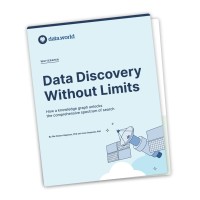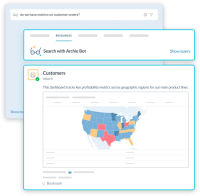In the months and years ahead, the much-discussed trends of onshoring, nearshoring, and rising tariffs across global trade are set to present an entirely new set of data governance challenges for business leaders.
The full dimensions of this challenge are often obscured in public discourse. When we think of supply chains, we picture grain silos on the prairies, giant container ships traversing the seas, miles-long trains snaking across continents, or fleets of 18-wheelers barreling down the Interstate. These physical manifestations are impressive, but they tell only part of the story.
Whether it’s a cargo of GPUs from Taiwan en route to a cloud provider like AWS, or quinoa traveling from Peru’s Andean highlands to a Whole Foods market, the arteries of the world’s $32 trillion in annual trade are staggering. At any given moment, 3.5 million trucks are in motion across the United States. Daily, 50,000 merchant ships traverse between 3,700 major ports. And in the skies, 180,000 metric tons of high-value cargo—equivalent to the weight of 30,000 elephants—travel aboard cargo flights and passenger planes.
However, what often escapes attention is the vast information infrastructure underpinning this physical movement. As Parag Khanna aptly notes in his seminal book Connectography, “We do not see supply chains; rather, we see their participants and infrastructure.” His insight highlights how the explosive 10X growth in trade over the past three decades has been powered not by cranes or trucks, but by the invisible flow of information enabled by the internet and digital technologies.
The data driving supply chains is as vulnerable as the goods themselves
Behind these flows of goods lies a torrent of data—hundreds of terabytes exchanged daily in billions of transactions spanning shipping, customs, logistics, inventory, and financial systems. This data is vital: real-time tracking, predictive analytics, compliance documentation, and seamless coordination among countless stakeholders ensure that supply chains function. Yet this data flow is now as vulnerable to geopolitical shifts, rising tariffs, and reshoring initiatives as the physical chains themselves.
Consider the looming challenge of China’s potential dominance over “legacy chips”, the workhorse semiconductors that power consumer electronics, automotive manufacturing, and even defense technologies. These chips, critical to emerging technologies like artificial intelligence, are at the center of concerns about U.S. security, industrial resilience, and competition. As economics writer Noah Smith (one of my favorites) points out, the U.S. currently lacks visibility into whether products like Mexican-made PCs or Vietnamese smartphones contain Chinese-made chips—a gap that poses risks of espionage, sabotage, or supply disruptions.
One promising idea, inspired by the National Institutes of Health’s drug ingredient tracking system, is the creation of an international database of products containing Chinese chips, enforced through random audits. Such initiatives could transform transparency in global supply chains.
Meanwhile, initiatives like the Global Supply Resilience Initiative (GSRI), spearheaded by the World Economic Forum, aim to enhance supply chain resilience through data sharing and visibility. The GSRI envisions an open-source data platform to break down the silos that still dominate supply chain management, where 90% of maritime enterprises rely on outdated tools like Excel. The Forum’s research shows that supply disruptions during the pandemic cost the global economy $4 trillion, while the Ukraine war has added nearly $1 trillion more. These staggering figures highlight the urgency for a data-driven transformation.
Visible data is governable data
The GSRI envisions a future where businesses achieve both “structural visibility” to understand their operations at a glance, and “dynamic visibility” to monitor, predict, and respond to disruptions in real time. By leveraging data governance systems, enterprises could track inventory 24/7, optimize decisions, and mitigate risks more effectively.
At data.world, we are actively building solutions to address these challenges. Our knowledge graph and data cataloging and governance tools enable real-time supply chain visibility by integrating data from suppliers, logistics, and inventory systems. These tools allow business leaders to:
Identify bottlenecks and manage crises effectively.
Predict risks using historical and real-time data.
Reconfigure supply chains dynamically with instant access to alternate suppliers and routes.
Ensure compliance with trade regulations and avoid costly disruptions.
Beyond these capabilities, our tools also empower enterprises with traceability, collaboration, and analytics to adapt to the profound disruptions reshaping global trade. The months and years ahead will demand more than just resilience—they will demand agility, innovation, and smarter governance of both physical and supply chains along with the data that makes it all happen.
At data.world, we are ready to help businesses navigate this transformation. Demo our data cataloging and governance platform today — we would love to help you. We cover DataOps and AI too, all powered by our common knowledge graph foundation.





